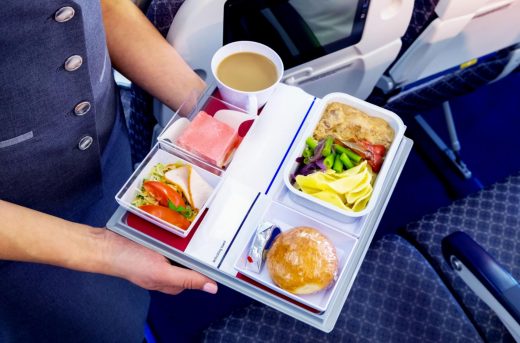
Restaurants aren’t the only places chefs can flex their culinary creativity. It may seem like there’s only one path to becoming a chef: culinary school, then restaurant. But these chefs are proving otherwise. In this edition of Weekly Bites, we’re featuring three stories of chefs working in unique spaces. From a museum cafe to airplane food and pop-ups, get ready to look at culinary careers in a new light.
The museum cafe can be a space for reclamation
Most museum cafes are sparsely decorated and serve as a spot for visitors to rest and whet their appetites before continuing to browse the museum.
Cafe Ohlone at the Hearst Museum of Anthropology in Berkeley, California is doing much, much more.
The cafe, co-founded by Vincent Medina and Louis Trevino, is collaborating with UC Berkeley to serve as a center of cultural and linguistic celebration of the Ohlone tribe. Both UC Berkeley and the Museum of Anthropology have stolen and stored remains and artifacts of the Ohlone people for years. Now, they are in the process of repatriation — returning artifacts and remains to their rightful homes.
Cafe Ohlone is part of this process, and part of a larger shift in museum culture towards celebrating living cultures and languages, and not just the past. The cafe features the Ohlone language in songs sung on speakers, and features indigenous ingredients like acorn bread and black walnuts.
Cafe Ohlone is a great example of how a museum cafe can be so much more than a pit stop — it can be a cultural experience all on its own.
Your next meal is in the sky
Have you ever wondered about how airplane food gets made, especially food for long haul flights? The pre-packaged coach meals are simple enough, but what about the fine dining options that get served in first class? How does all of the food make it to the plane when all the plane has access to are ovens for reheating?
This NY Times article gives a peek behind the curtain of Gate Gourmet, an airline catering company that serves over 200 airports.
Cooking airplane food isn’t just about cooking in bulk. It also involves the unique challenges of eating on an airplane. As the altitude goes up, sensitivity to sweetness and saltiness drops, so the Gate Gourmet team actually bumps up salt and sugar levels by about 10 percent. There’s also the matter of creating just two or three meal options that will appeal to people of different cultures.
Despite these limitations — and the bad rap that airplane food gets — some truly creative dishes are created for airplane dining. A Catalan-inspired pot roast and a mushroom mapo tofu lasagna don’t sound like dishes you’d order at a restaurant, but they’re real dishes you might find in coach dining.
Are pop-ups the start to a great career?
Pop-ups are a great way for chefs to test out new concepts and build their brand, without investing a ton of money.
In recent years, we’ve seen more pop-ups aimed at highlighting marginalized chefs, in an effort to promote diversity in the culinary industry. Some chefs are now questioning whether these pop-ups are a sincere effort, and whether exposure is even enough.
Chef Preeti Mistry co-created a pop-up series called Shifting the Lens, which gives marginalized chefs the opportunity to tell their stories through food. Despite this, Mistry highlights her own struggles in taking the next step to establish her career by applying for the licensing needed to open a restaurant. She also highlights the burden that is put on marginalized chefs to determine whether a pop-up opportunity is a genuine attempt to change things in the culinary industry, or just an easy way for brands to say they value diversity.
Pop-ups are all about awareness. Raising awareness of a chef’s talent, alongside raising awareness of an issue — like the lack of diversity in the culinary industry. But awareness is not enough to fix a problem, and the question remains whether pop-ups do enough to lift up and support marginalized chefs.


